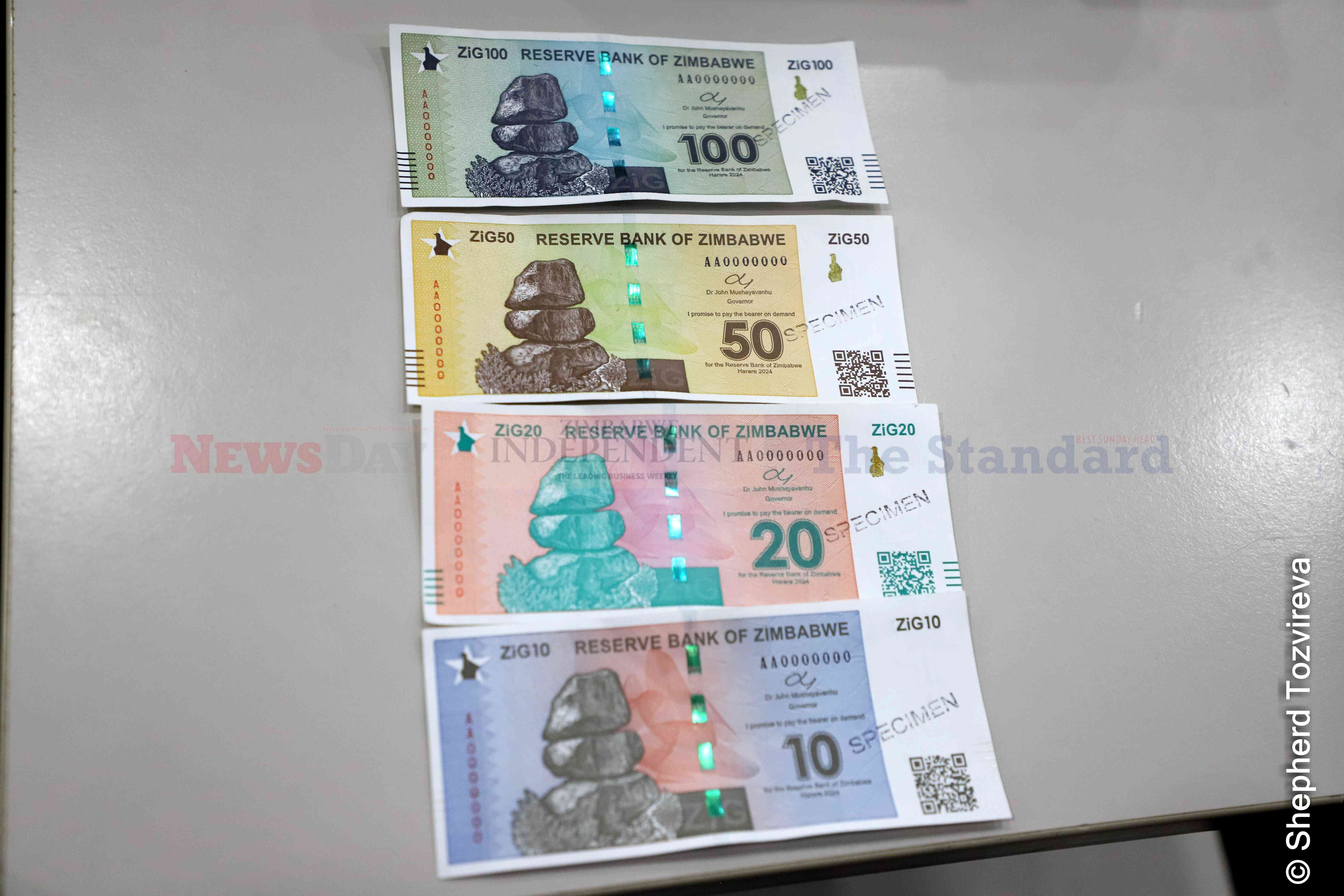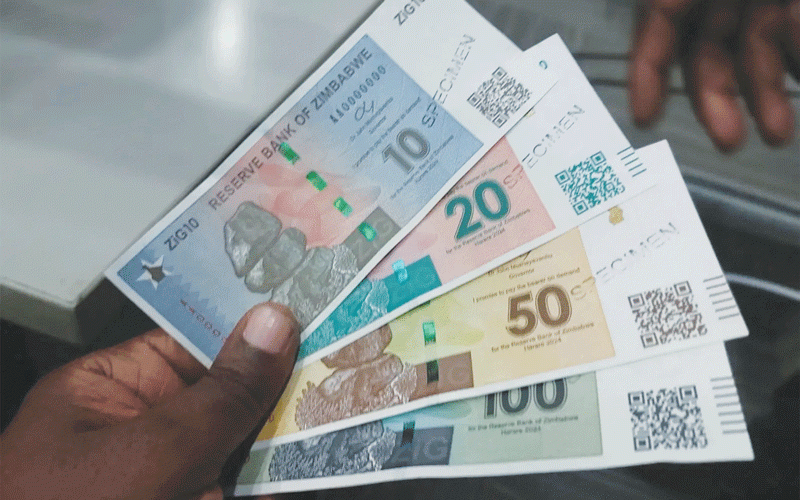
A liquidity crunch in Zimbabwe is deepening the economy’s embrace of the US dollar and undermining the bullion-backed currency introduced by the government almost a year ago.
The ZiG, short for Zimbabwe Gold, which began trading on April 8, is the southern African country's sixth attempt since 2009 at replacing the dollar with a functional local currency. It has not gone well.
In September, after persistent weakness against the dollar, the Reserve Bank of Zimbabwe devalued the ZiG by 43%, raised the key interest rate to 35% from 20% and increased cash reserve requirements to steady the currency. It has depreciated almost 4% this year.
The stability measures have led to an “economy swimming in dollars,” said Eddie Cross, a Harare-based independent economist and former monetary policy committee member. The liquidity crunch has “now killed the ZiG,” he said. “The ZiG has retreated as a currency of trade and effectively we have dollarised.”
The tight monetary policy stance has fuelled a slump with stocks plunging on Harare’s main exchange, consumer prices falling 0.1% in March and ZiG supply scant on the unofficial market.
The ZiG is being used to settle mostly minor transactions including utility and tax payments and a portion of civil servant wages. The rest is paid in dollars. The currency cannot be used to pay for essentials including fuel, rent and medicines.
The highest denomination ZiG banknote is worth about US$7.50 — enough to buy six loaves of bread.
Despite being backed by more than US$550 million in gold and cash reserves, used as a selling point to win public trust, its “limited use in salient sectors of the economy” makes differences with its failed predecessors seem “cosmetic,” said Jacques Nel, head of Africa macro at Oxford Economics.
- Mavhunga puts DeMbare into Chibuku quarterfinals
- Bulls to charge into Zimbabwe gold stocks
- Ndiraya concerned as goals dry up
- Letters: How solar power is transforming African farms
Keep Reading
“It would have taken something special to convince Zimbabweans that this time is different,” he said.
Not even the more than 30% surge in the bullion price since the gold-backed currency’s adoption has helped.
Part of the problem is that the level of hard currency reserves backing it are “woefully inadequate,” because the country has been locked out of capital markets since a debt default in 1999, said Hasnain Malik, an emerging-market strategist at Tellimer in Dubai. “Its demise should be no surprise,” he said.
Still, policymakers don’t plan to loosen their tight monetary stance or ditch the ZiG. Last week, the central bank kept the key rate at 35% and added that it would remain vigilant to any emerging risks to inflation and exchange rate stability.
“It’s going to be a bumpy ride, but we are fully committed,” Innocent Matshe, the RBZ’s deputy governor told business leaders on February 13, Harare.
The currency’s survival depends on the ruling party’s support, said Tony Hawkins, an independent economic consultant in Harare and former economics professor at the University of Zimbabwe.
History has shown that every new currency in Zimbabwe has “a shorter lifespan” than its predecessor and with the ZiG not really being used it could be headed for the same fate, he said.
“What else is the ZiG used for except arbitrage opportunities and to pay civil servants,” Hawkins, said. “I can’t see the ZiG surviving that long.”
Zimbabwe has been facing a currency crisis for over two decades now and this has put a serious dent on the economy and causes severe job losses.
In 2008, hyperinflation peaked at staggering levels, causing the Zimbabwe dollar to lose its value and the government to abandon it in 2009.
Since then, the US dollar and other foreign currencies have been widely-used throughout the economy.
Many Zimbabweans like the safety of the US dollar, which accounts for around 85% of transactions. It is for this reason that the RBZ decided on a mix of the ZiG and foreign currencies under a multi-currency system.
Nonetheless, authorities have been reportedly pursuing unofficial tenders, which continue to echew the ZiG.
Stable currenckies and reliable economic conditions are critical for developing industries and attracting foreign investments, economic analysts say.
Across Africa, efforts are underway to enhance payment systems for local currencies. For example, the Pan-African Payment and Settlement System (PAPSS) which was developed by the African Union and the African Export-Import Bank, is a centralised financial market infrastructure enabling the secure flow of money across African borders.
The PAPSS allows users to make near-instant payments in their local currency, without converting to a foreign currency or using a third-party institution or bank.
Last year, insight report from the World Economic Forum, AfCTA: A New Era for Global Business and Investment in Africa noted that PAPSS “will help African business avoid the delays in confirming payments that have long been a barrier to trade” and will lead to increased trust and time capacity to increase trade volumes.” —Bloomberg
*Additional reporting from the World Economic Forum.










